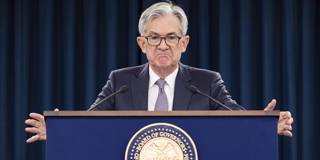One can debate whether there is still a narrow path by which the United States could avoid both secular stagnation and stagflation in the years ahead. But there is good reason to suspect that the US Federal Reserve has stopped bothering even to look for an optimal middle way.
BERKELEY – Soon after the 2020 presidential election, the incoming Biden administration set about mapping out its economic agenda. It took pains to avoid three mistakes.
First, it was committed not to fall into the same trap as President Barack Obama’s administration in 2009, when it failed to set clear priorities and look more than one move ahead. While Obama and his advisers had a plan for the first round of recovery measures following the 2008 financial crisis, they did not have a strategy for what to do when congressional Republicans and “blue-dog” (pro-austerity) Democrats mobilized against them. When that first round proved insufficient for delivering a robust recovery, the stage was set for a lost half-decade of tepid growth and widening income inequalities.
Second, the Biden administration’s policy planners were wary of providing too large a boost to spending. But they also knew that achieving a rapid and complete recovery would mean accepting some level of inflation. Because the post-pandemic economy would be configured differently than the economy that had preceded it, wages would have to rise in the newly expanding industries to attract the necessary supply of workers. Without clear price signals, workers would not have gone where they needed to go for the recovery to stay on track.

BERKELEY – Soon after the 2020 presidential election, the incoming Biden administration set about mapping out its economic agenda. It took pains to avoid three mistakes.
First, it was committed not to fall into the same trap as President Barack Obama’s administration in 2009, when it failed to set clear priorities and look more than one move ahead. While Obama and his advisers had a plan for the first round of recovery measures following the 2008 financial crisis, they did not have a strategy for what to do when congressional Republicans and “blue-dog” (pro-austerity) Democrats mobilized against them. When that first round proved insufficient for delivering a robust recovery, the stage was set for a lost half-decade of tepid growth and widening income inequalities.
Second, the Biden administration’s policy planners were wary of providing too large a boost to spending. But they also knew that achieving a rapid and complete recovery would mean accepting some level of inflation. Because the post-pandemic economy would be configured differently than the economy that had preceded it, wages would have to rise in the newly expanding industries to attract the necessary supply of workers. Without clear price signals, workers would not have gone where they needed to go for the recovery to stay on track.